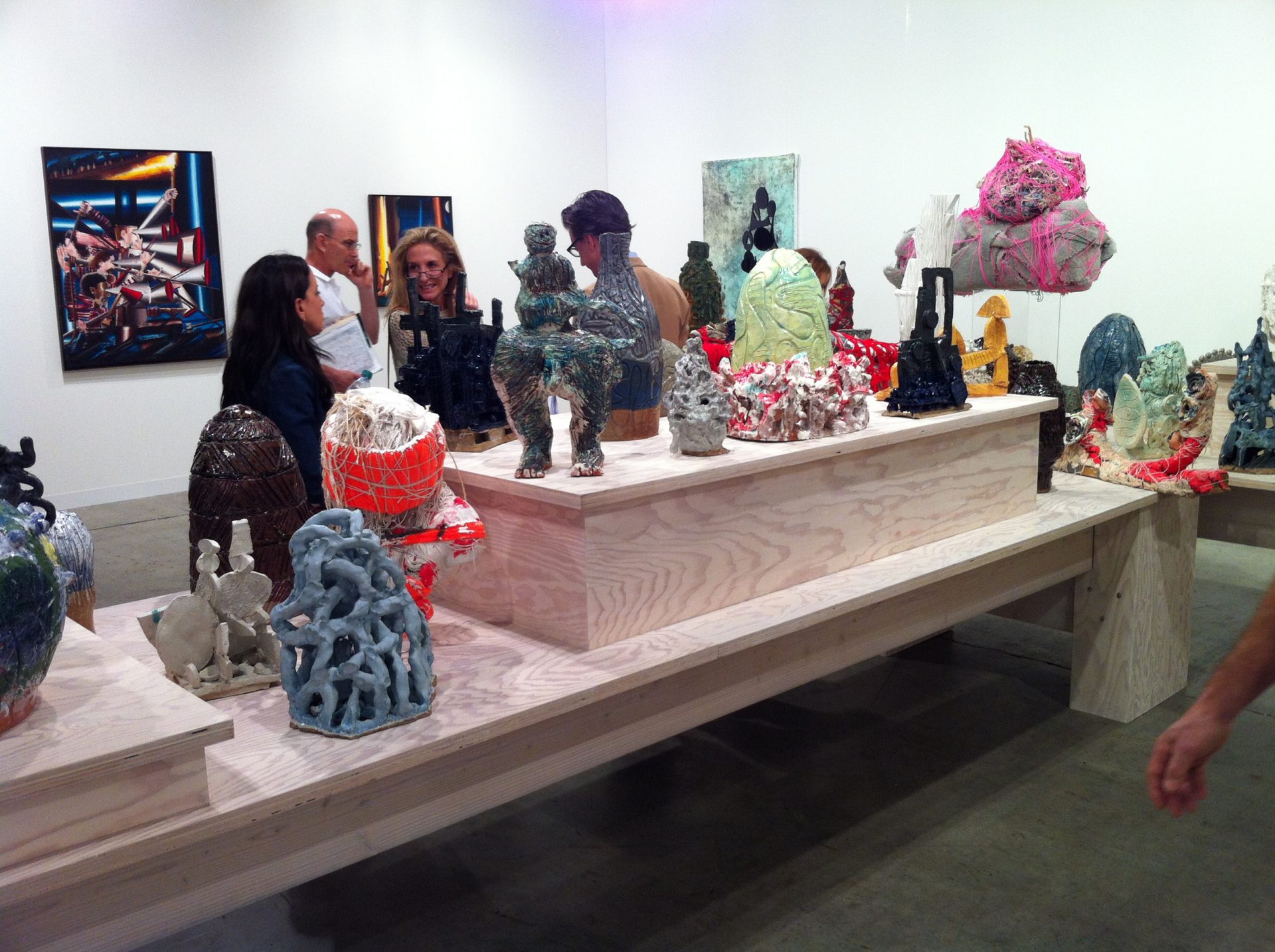The Making of a Public Art Piece, Miami Beach Style:
“So there are some electrical boxes down at 3rd Street and Washington Avenue in Miami Beach. They’ve never been very attractive, and on top of that they’ve been tagged and desecrated numerous times over the years. The city decided that turning them into a public art work might just be a good way to brighten this blighted spot.
In the Fall of 2008, Wendy Wischer, who often works with light and mirrors and glass and shows at David Castillo‘s gallery, was awarded the commission to beautify these pedestrian objects. As it turned out, the project was quite an endeavor, involving 360 feet of hand-cut glass tiles, 90-degree heat, and rain and glue that didn’t like each other much. But when this sparkling, blue-tiled piece is unveiled in time for Art Basel, it will be something to behold. We interrupted Wischer, after another grueling day’s work, and asked her about the project.
Q: How did you come up with the idea for this piece?
I looked at the site, and it is two blocks from the ocean. The breezes along with the sun on the coast became part of the concept. I also wanted to include the people in the area and the immediate surroundings, so I chose mirror — blue mirror in this case — that can reflect those that live and pass by the area. The patterns of the glass pieces are arranged loosely on the pattern of the Golden Mean.
Q: Tell us more about the specifics of the blue mirror.
‘Liquid Measures’ (as the piece is called) uses Blue Moon Waterglass tiles, containing a ‘water glass’ surface with a blue color. During the day, the sun reflects off these tiles and creates beautiful light patterns around the surrounding sidewalk area, similar to a disco ball. The tiles will create organic light shapes and also be far softer and muted, since the tiles are not made out of silver mirror.
In the end, the Waterglass tiles will have a watery effect. They will shimmer as viewers walk by, referencing the water that surrounds Miami Beach just a few blocks away.
At night, ground lights placed in the area between the electrical boxes will shine on them, illuminating the area with the same soft light fragments bouncing off from the tiles. They will twinkle as they catch and reflect the light from the area street lights.
Q: What did the project entail?
All the glass tiles were hand cut [by the artist] — nearly 360 feet of surface.
Q: You have been sitting there on the sidewalk of South Beach for a couple weeks now, what has the public’s reaction been?
The residents have been very supportive of the piece. Also, the public works employees come everyday to check the meters and they have been great — very complimentary and helpful.
Q: What do you hope we experience as we take in the latest addition to our art in public spaces?
I would like viewers to see the piece and have it redirect their attention to the surrounding environment: the wind, sun, water — and their place within it.”
(Via Knight Arts.)


